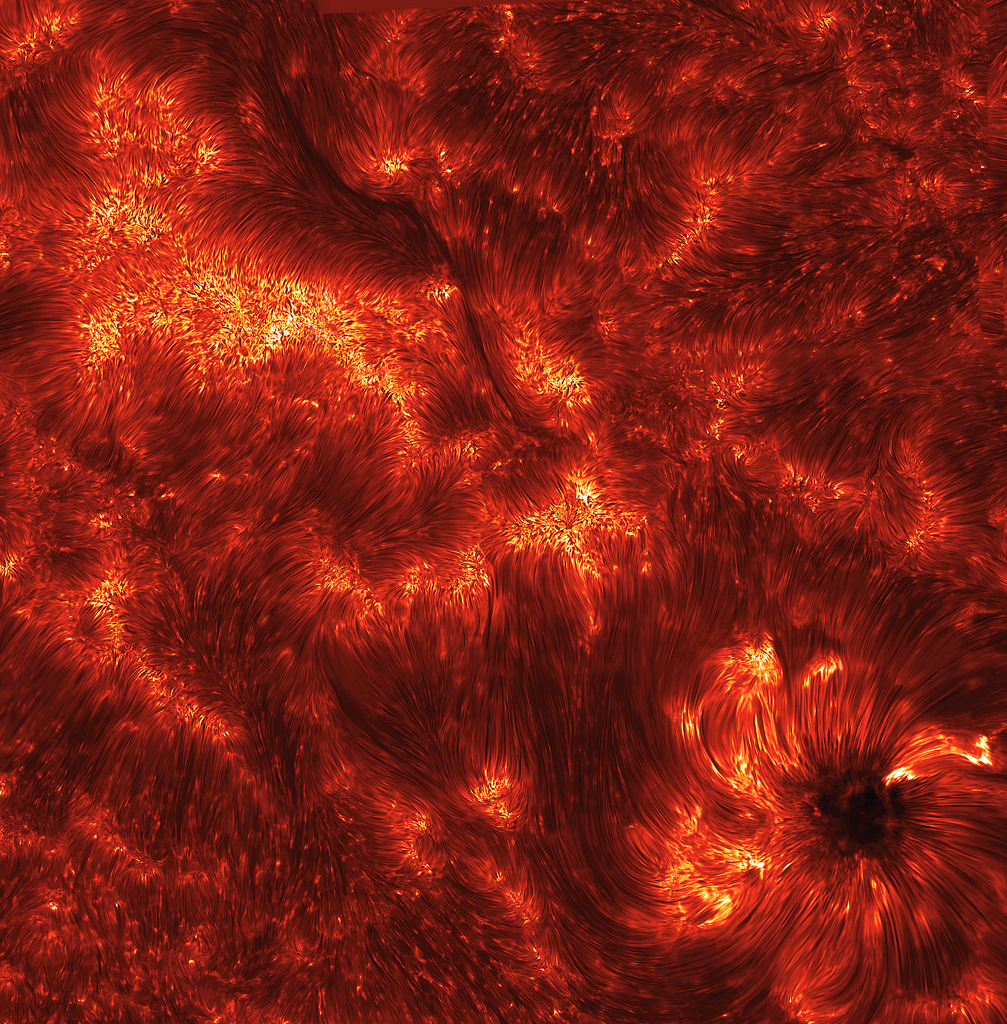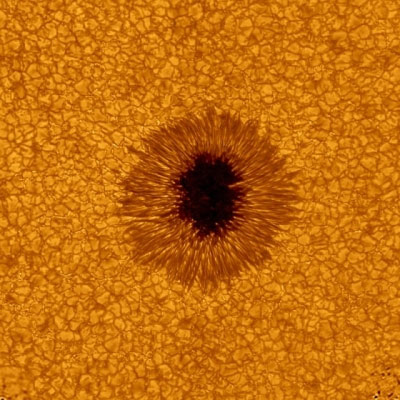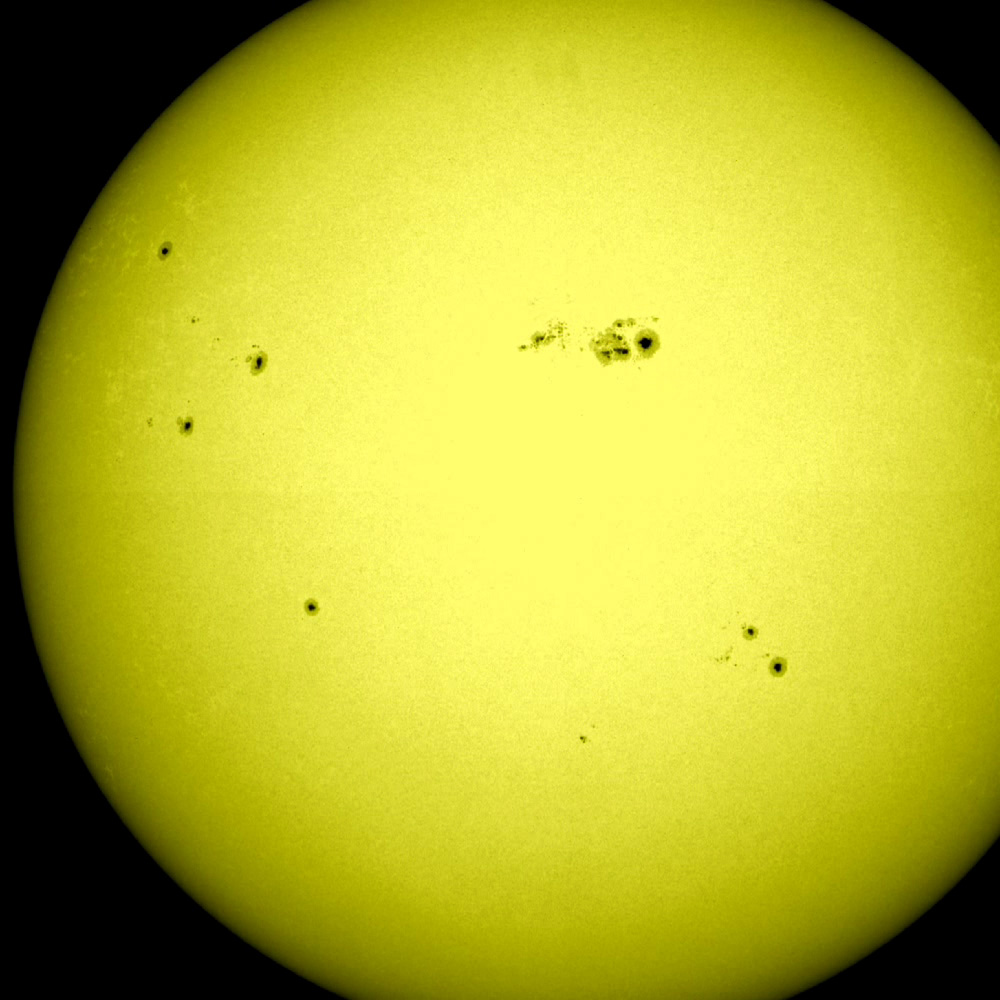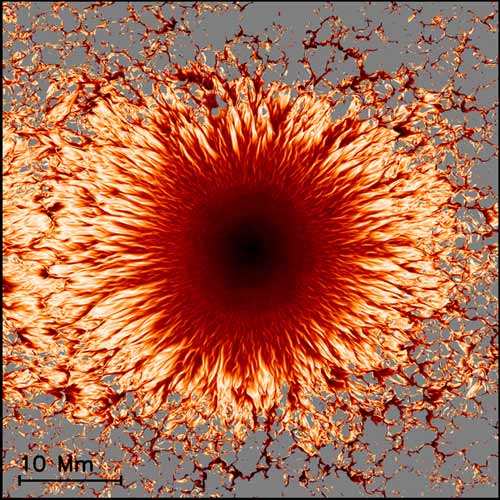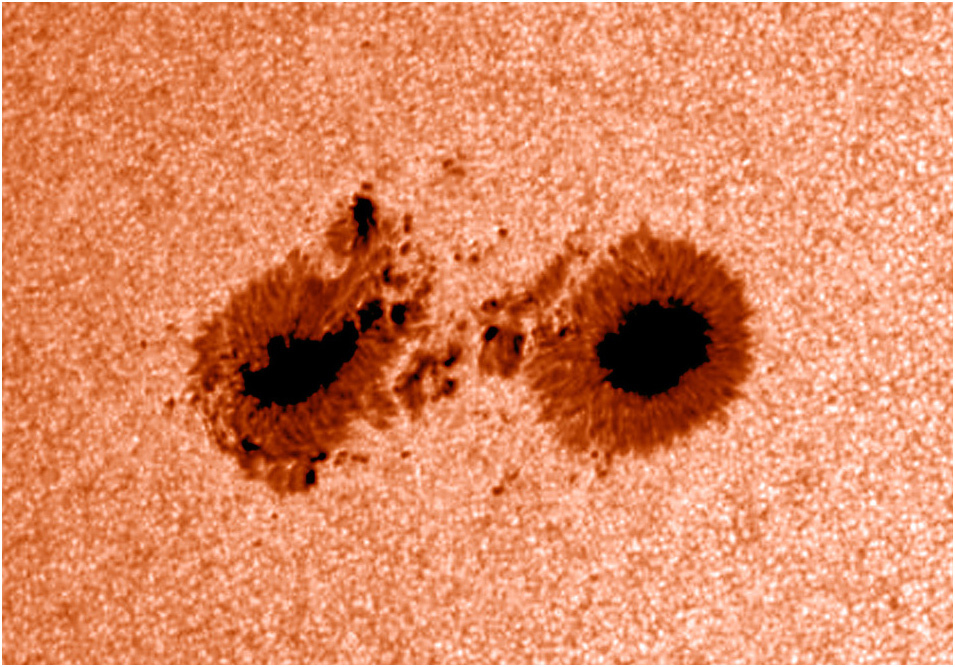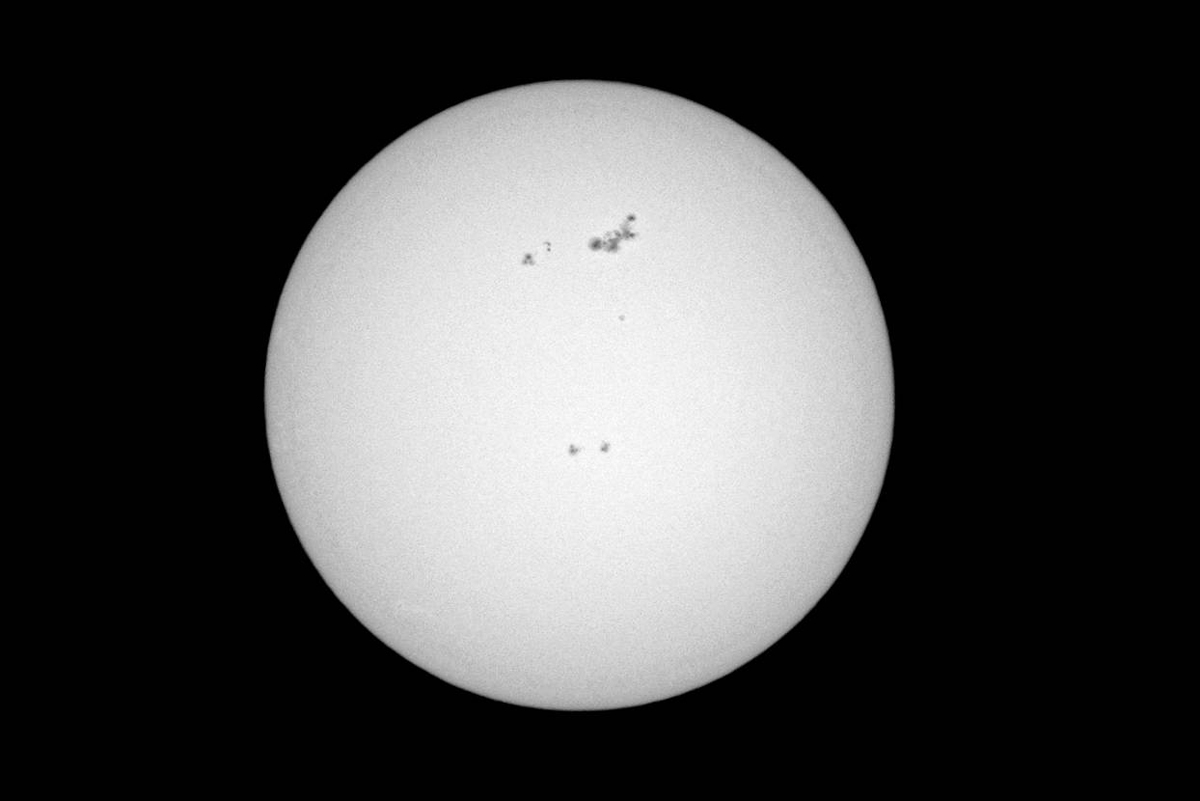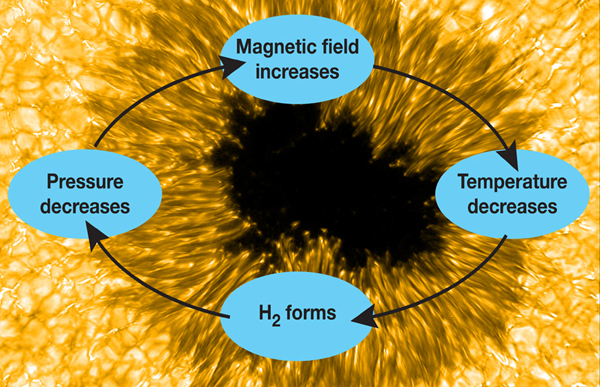Photos: Sunspots on Earth's Closest Star
Spicules: Jets on the Sun
A spicule is like a pipe as wide as a state and as long as the Earth, filled with hot gas moving 50,000 kilometers per hour. The "pipe" is not made of metal, rather a transparent magnetic field. Thousands of young spicules form on the active Sun. This image is one of the highest resolution taken of these enigmatic solar flux tubes. What determines the creation and dynamics of spicules remains a topic of active research.
Sunspots in 3-D
Two sunspots simulated in 3-D by model data, viewed from above and in cross-section below surface.
Sunspot Close-up
Transition from inner umbra region (right) to outer penumbra region (left) in one sunspot.
New Telescope Takes Best Sunspot Photo Ever
Images taken July 1 and 2, 2010 by the New Solar Telescope at the Big Bear Solar Observatory reveals up-close details of a sunspot like never before. Full Story.
Big Sunspot November 2011
Probably the largest sunspot that we have observed in several years has rotated to the center of the Sun (Nov. 6-8, 2011) as viewed by SDO where effects from solar storms could possibly be felt here at Earth. This large sunspot is accompanied by a good many smaller sunspots as well. It has already blasted out several medium- to large-sized solar flares and has the potential to hurl out more. How large is it? The group extends more than 100,000 km from end to end and each of the several dark cores is larger than Earth.
Supercomputers Give Inside Look at Sunspots
The simulation shows the interface between a sunspot's umbra (dark center) and penumbra (outer region) shows a complex structure with narrow, almost horizontal (lighter to white) filaments embedded in a background with more vertical (darker to black) magnetic field.
Observant Sunspots
It appears that these pairs of sunspots are peering out from the Sun. Sunspots are a little cooler (7,000 degrees F.) and thus appear darker than the Sun's surface (10,000 degrees F.). Notice how the surface looks dimpled everywhere you look: each of these granules is the top of a convection cell where hot fluid rises up, spreads out, then sinks back over about 20 minutes. Each granule is about 620 miles across.
Breaking space news, the latest updates on rocket launches, skywatching events and more!
AR1429 Sunspot Region March 7, 2012
Skywatcher Kenneth Farmer took this photo of the sun showing AR1429 sunspot region on March 7, 2012. He says: "I live in San Francisco and took this photo yesterday through a telescope (with a solar filter) of the AR1429 sunspot region. This is the area that generated the massive solar flare."
Sunspot Emergence and Cooling Diagram
During the initial stage of sunspot emergence and cooling, the formation of H2 may trigger a temporary "runaway" magnetic field intensification. The magnetic field prevents the flow of energy from inside the sun to the outside, and the sunspot cools as the energy shines into space. They form hydrogen molecules that take half the volume of the atoms, thus dropping pressure and concentrating the magnetic field, and so on.
Active Sunspot Region 1429
The massive sunspot region AR1429 has been particularly active since it emerged on March 2, 2012.

Space.com is the premier source of space exploration, innovation and astronomy news, chronicling (and celebrating) humanity's ongoing expansion across the final frontier. Originally founded in 1999, Space.com is, and always has been, the passion of writers and editors who are space fans and also trained journalists. Our current news team consists of Editor-in-Chief Tariq Malik; Editor Hanneke Weitering, Senior Space Writer Mike Wall; Senior Writer Meghan Bartels; Senior Writer Chelsea Gohd, Senior Writer Tereza Pultarova and Staff Writer Alexander Cox, focusing on e-commerce. Senior Producer Steve Spaleta oversees our space videos, with Diana Whitcroft as our Social Media Editor.
